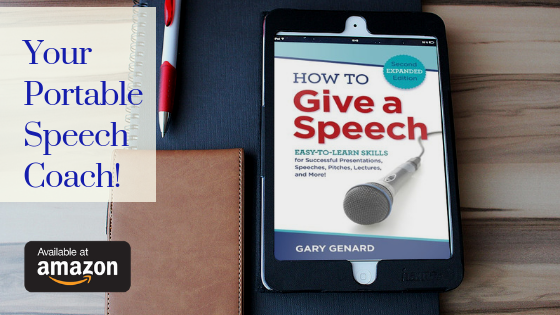
Are you an expert in your field who is missing the mark with listeners? Here's the one skill you need to know how to engage an audience!
Is it possible to be a leader in your field who gives the opposite impression when you speak? Can you think of a worse situation when it comes to trying to influence stakeholders?
You can know your stuff—and even care deeply about the people you're talking to—and still give the wrong impression entirely.
Leaders go well beyond delivering information. Reach the next level of impact! Get my free cheat sheet, "Leadership Skills: The 5 Essential Speaking Techniques."
A huge part of being successful when you speak comes down to a simple fact: you need to know how to engage an audience. And if you're not doing so, part of the problem may be not paying enough attention to listeners when you speak.
Are You Present when You Present?
Since we're all human (at least until AI gives us robot presenters), we have a perfectly natural failing: we tend to judge the success of our talks by how we feel when we're giving them. If we're nervous and off our game, we must have been terrible. And if we feel great afterwards, well, we must have been terrific!
Of course, it's all pretty objective for the audience, who usually experiences no such intense emotional responses.
All of which is to say, we often aim for the wrong target. The successful outcome of a talk, from team meetings to convention keynotes, should never be self-gratification, or even professional standing. It must always be the value provided to the people in the seats: your audience. You're "giving" a speech, after all (as in gift), and your listeners' lives should be improved in some small or large way because you've done so.
So shouldn't you be paying attention to whether that's happening? To put that another way: Don't you have to be present when you present?
Are You Noticing the Audience's Body Language?
Every good presentation isn't a monologue, but a dialogue. Your audience is talking back to you. It just isn't verbal most of the time.
But it certainly is nonverbal . . . and you need to be watching the show! Listeners are giving you lots of feedback through all the nonverbal channels: body language, posture, facial expressions, head nods or back-and-forth shaking, etc. Sometimes there are even vocal clues such as sighs, grunts, skepticism, and so on. Every one of these messages is there for you to pick up on, and if they're negative, change your approach.
Doing so can be a game-changer concerning the success of your talk. That's what happened to me the first time I trained a group of diplomats at the U.S. State Department.

The Payoff of Paying Attention
I had received only a day's notice that another trainer was suddenly available. As a result, I had been selected to teach a three-day workshop in public speaking and media appearances at the Foreign Affairs Training Center. I pulled together (I quickly pulled together) a curriculum, booked a hotel room and an expensive last-minute flight, and sallied forth.
Sometime during the afternoon of the first day, I looked out at the 20 or so State Department officials I was teaching, and saw disengagement. Believe me, if you're an actor like I am who's used to paying close attention to your audience, you notice when you've lost them. And I had, though I didn't know why. So I did something radical, and asked my trainees where and how I'd lost their engagement sometime in the last few minutes.
Fortunately, they responded. They told me frankly why the principles I was discussing didn't apply to their own speaking. Their audiences abroad, they told me, were different from those I had been speaking about. I said an enthusiastic "Thank you!", and asked if we could brainstorm a role-playing exercise that would approximate those situations.
The result was a crisis communication exercise, one that simulated much more closely the real-world situation they faced at their posts. It was so successful that I used it for the next twelve years that I trained State Department personnel.

How to Help Yourself As Well as Your Audience
Was my solution a radical one, i.e., is it unusual to actually stop a presentation and ask what's gone wrong? Of course. But there can be—and will be—hundreds of times in your career when noticing how audiences are responding will benefit you.
Nervous speakers lock themselves into their content. They're convinced that if they stick to the script, nothing can be wrong. Dynamic public speakers understand that just the opposite applies. If something is going to happen in the room—if people are to leave changed for the better—it needs to be a shared endeavor. Like all 'stage' performance, the interaction is about the present moment and how it's shared by speaker and audience.
So let yourself and your audience get to that place together. Incorporate the essential skill of watching listeners to see how they are responding to you and your message. Learn and practice knowing how to engage an audience. Take an old actor's word: there's no payoff like it.
You should follow me on Twitter here.
Ready to be an audience influencer? Be a more memorable and impactful speaker. Get the expanded edition of my classic Public Speaking Handbook, How to Give a Speech!



